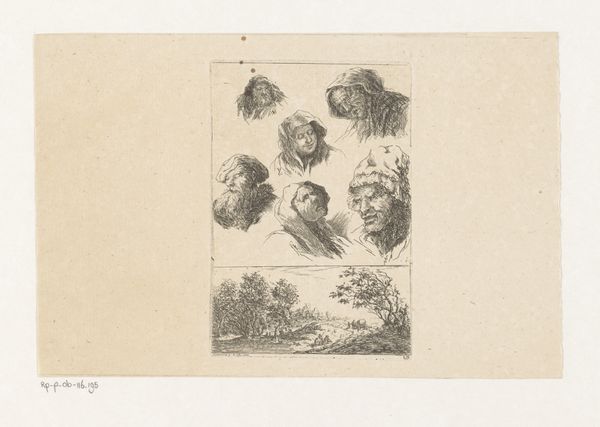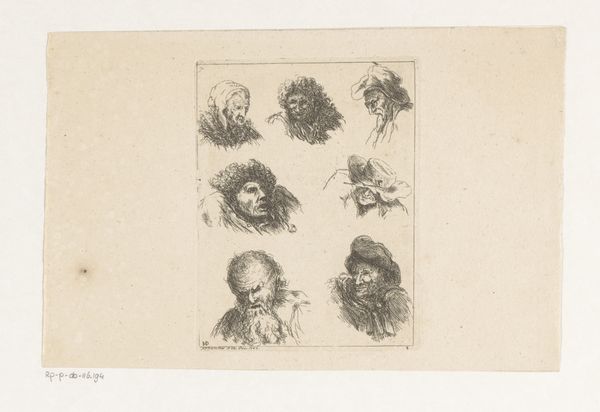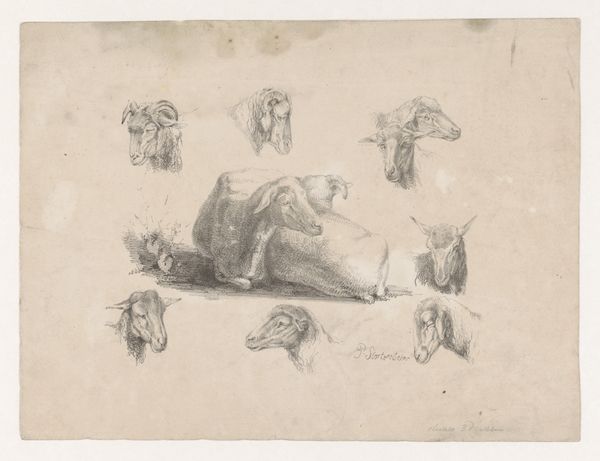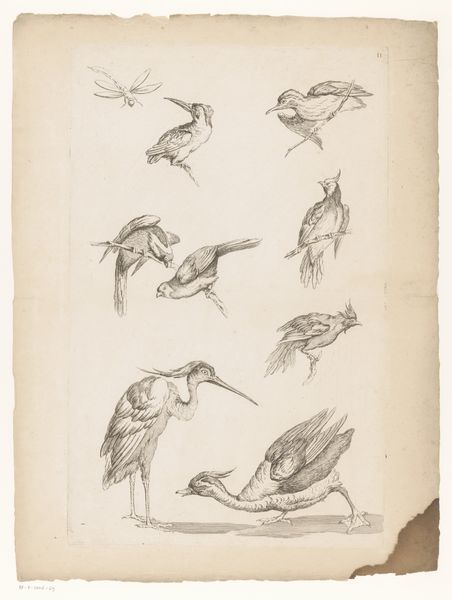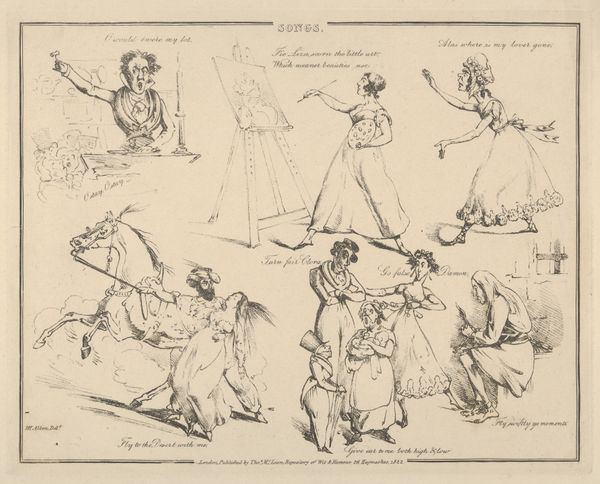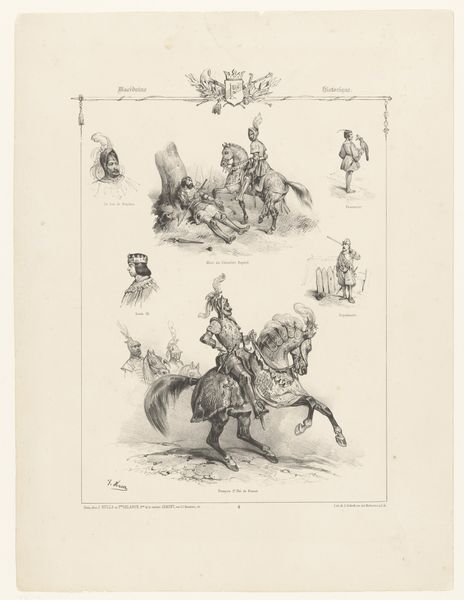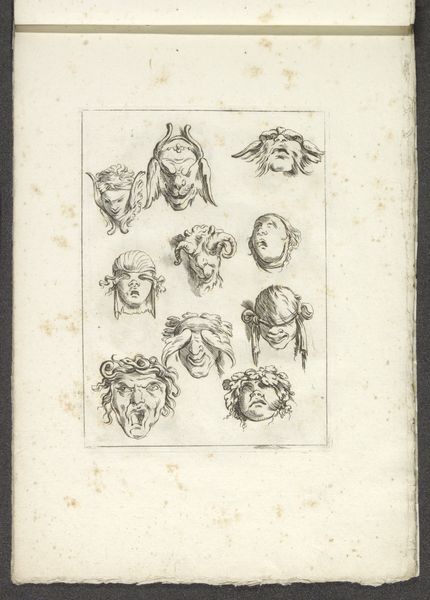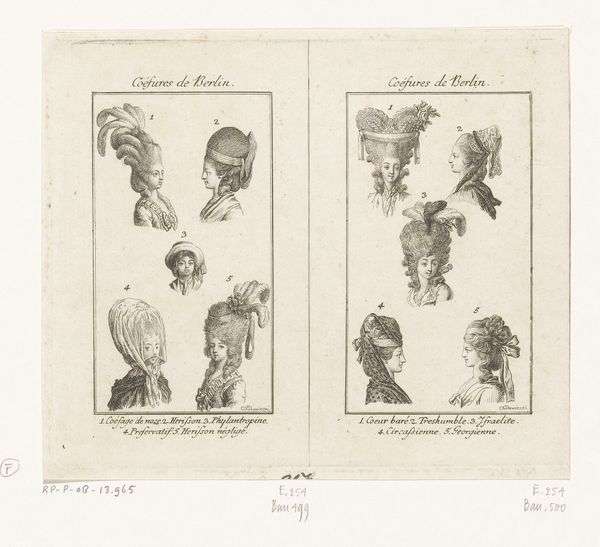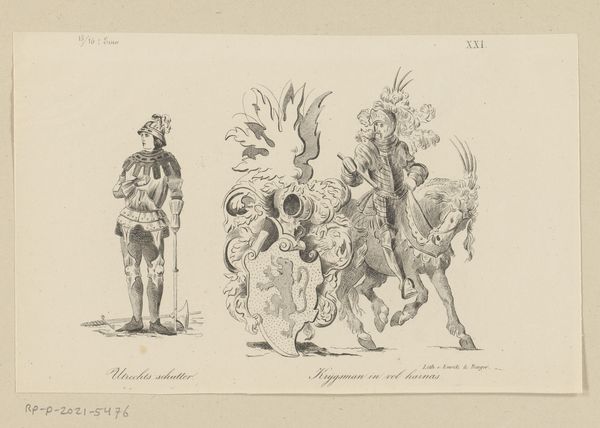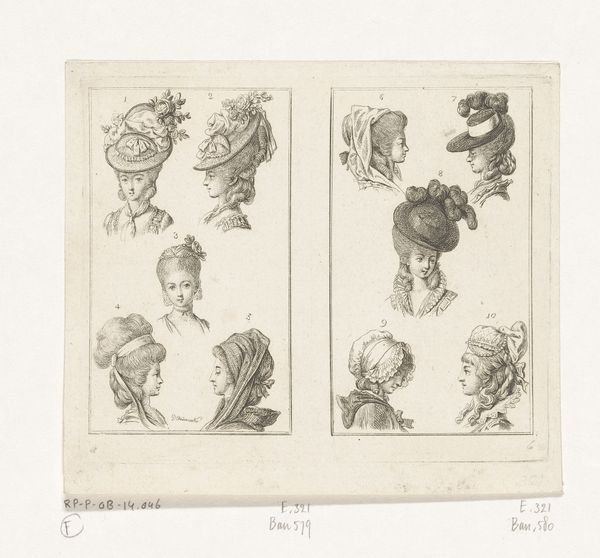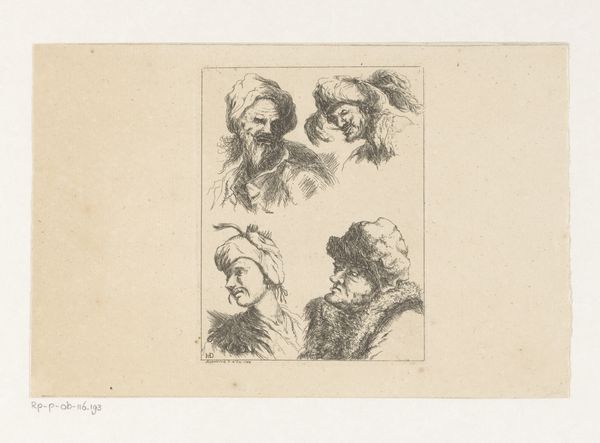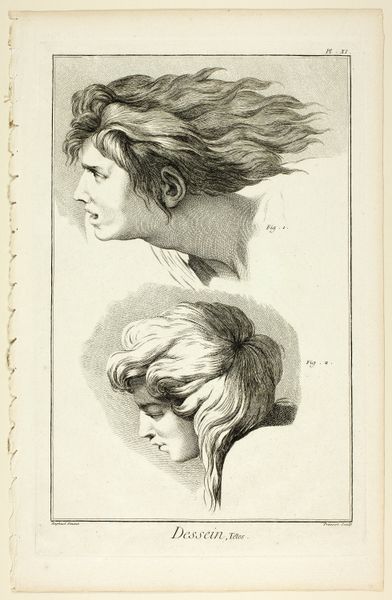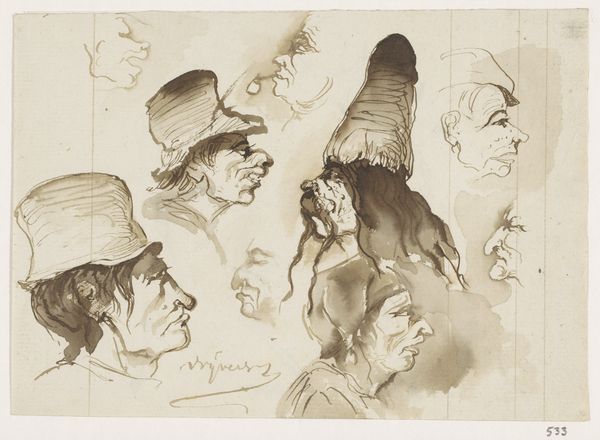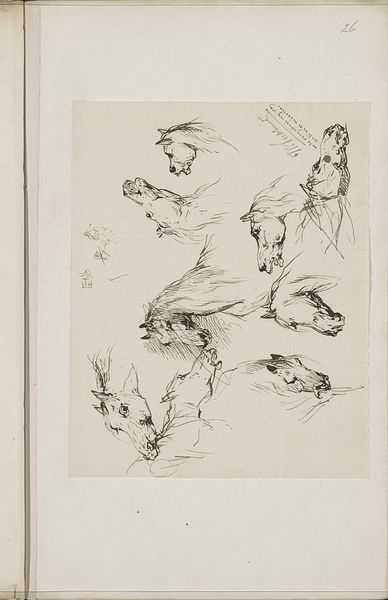
drawing, pencil, graphite
#
portrait
#
drawing
#
pencil sketch
#
figuration
#
pencil
#
graphite
#
sketchbook drawing
#
academic-art
#
realism
Dimensions: height 472 mm, width 350 mm
Copyright: Rijks Museum: Open Domain
Curator: So, what leaps out at you when you first look at these meticulously rendered chickens? There are ten of them, drawn in graphite, inhabiting this academic exercise crafted by Jules Laurens sometime between 1865 and 1878, known as 'Studies van tien koppen van verschillende kippen.' Editor: The mood is overwhelmingly colonial. The focused depiction of these domesticated animals for... scientific study? I immediately think about hierarchies and human intervention. Curator: It’s more like playful precision to me! Laurens wasn't about the heavy handed stuff. He’s tickling out the differences in breed through draughtsmanship! Each feathered face is distinct; you see the slightly quizzical air of one, the downright imperious stare of another… he even signs with such delicate flourishes, its precious. Editor: But who decides which breeds get this kind of… attention? Academic art like this had profound social impacts, defining taste and shaping perspectives along racial and class lines. Thinking about it, the level of realism—it almost dehumanizes the birds. Makes them specimens, stripping away agency. Curator: Oh, stripping agency! Drama queen. I disagree; he sees the sheer beauty and nuance of his subject matter—even if it does remind one of scientific displays! The precision doesn't cancel out a genuine sense of admiration, I think! He makes a statement by slowing us down, focusing on these fowl fellows… Editor: Hmm. Slowing us down to what end, though? Does this intense focus illuminate their world, or does it just serve to further categorize and contain? You can appreciate the beauty and still interrogate its context. Think of how animal representation ties into imperial expansion and resource exploitation. It gets very murky, very fast. Curator: Alright, alright. Perhaps this flock of pencil chickens does have a darker story tucked into their plumage, beyond a charming study. Maybe its also in its composition: he presents them to us almost entomologically… Editor: Exactly. We have to consider who art serves, who it excludes. Even something as seemingly innocuous as chicken portraits carries weight. It pushes you to reconsider even how we use chickens, and it asks questions around ownership, both then, and in our age, the chicken is political! Curator: So there we are, from sketched hens to the ethics of existence in two minutes! Editor: See how intersectional thought expands our view? Suddenly, it is not "just chickens." It’s an invitation to think bigger, broader, deeper.
Comments
No comments
Be the first to comment and join the conversation on the ultimate creative platform.
